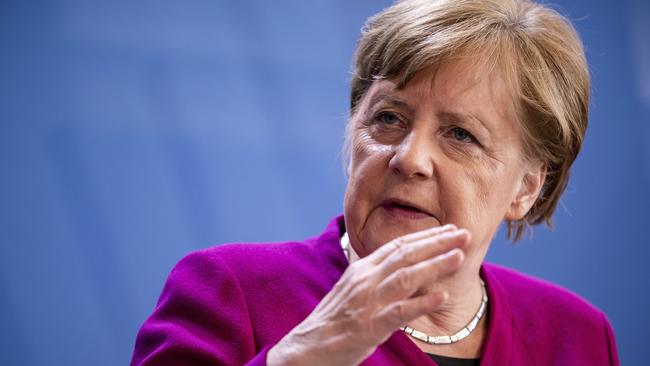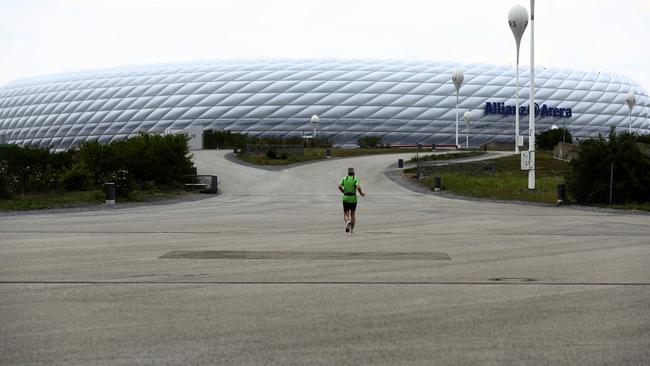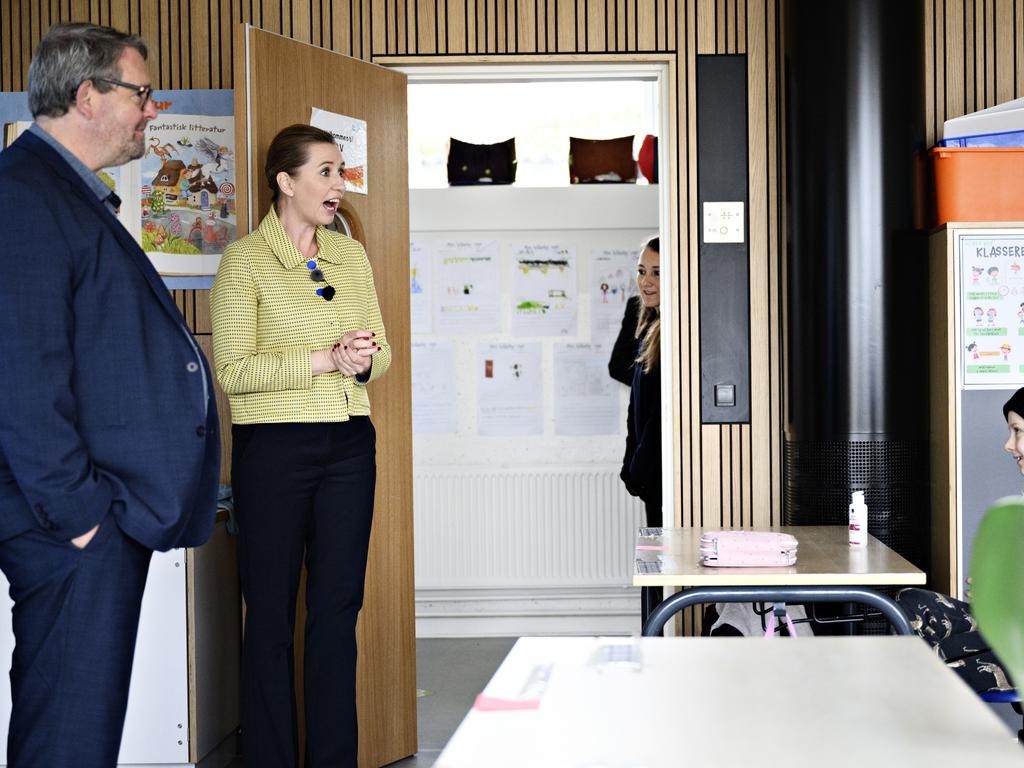Coronavirus: second shutdown looms as infection rate makes Merkel, Germany think again
Angela Merkel warns second shutdown ‘unavoidable’ in Germany if coronavirus case rates continue rising.

Germany may be compelled to bring back elements of its lockdown amid signs that coronavirus cases could be on the point of starting to multiply again.
The country’s virus reproduction rate, which measures how many people the average person with COVID-19 infects, has rebounded to a value of 1.0, the dividing line between growth and decline, according to epidemiologists.
Angela Merkel has warned that hospitals will be overwhelmed by the end of June if the number rises only a little. She also said a corresponding increase in infections would make a second “shutdown” unavoidable.
The figure is likely to exacerbate divisions over Germany’s strategy as ministers prepare to discuss the next steps at a video conference tomorrow (Thursday).
Over the past week the 16 states have begun to reopen shops, schools, zoos and even some churches. But there are still strong disagreements over how fast to lift the curbs on society and business.
Some senior figures in the chancellor’s centre-right party are pressing for more restrictions to be lifted in short order, arguing that the mounting economic damage is a greater danger than the risk of an uptick in infections.
Yet Mrs Merkel, 65, has dismissed what she called Offnungsdiskussionsorgien, loosely meaning “orgies of debate about opening things up”. “We have achieved so much, but we are not out of the woods yet, and we cannot gamble it all away,” she said.
The chancellor has placed the reproduction rate, also known as R0, at the heart of her approach to the pandemic. Any value below 1 means that the number of cases will fall; anything above 1 implies an exponential increase.
“If we get to a point where each patient is infecting 1.1 people, then by October we will be back at the limits of our health system in terms of intensive-care beds,” Mrs Merkel said. “If we get to 1.2 … then we will hit the full capacity of our health system as early as July.
“And if it’s 1.3, we hit the full capacity of our health system in June. So you can see how little room for manoeuvre we have.”
Two weeks ago, when Germany’s states agreed to partially relax social distancing rules, R0 had fallen to 0.7, from a peak of 1.3 in early April.
On Tuesday, however, the Robert Koch Institute (RKI), the government’s infectious diseases agency, said it had risen back up to about 1.
Chafing against lockdown
Lothar Wieler, the RKI’s president, said it was hard to tell why or when coronavirus carriers had become more likely to pass the disease on.
It may have something to do with Germans beginning to chafe against the lockdown. Social scientists at Mannheim University have interviewed a panel of more than 500 people each day and found both their fear of COVID-19 and their compliance with social distancing have slipped since mid-April.

Professor Wieler said the way R0 had crept up was no great cause for concern on its own, describing the value as “an important figure, but not the only holy grail” of epidemiology.
He pointed out that the number of new coronavirus cases reported in Germany had fallen from more than 6,000 a day in early April to less than a third of that number in the past week.
However, he urged Germans not to take their safety for granted. “We don’t want the number of cases to rise again,” Professor Wieler said. “We don’t want to have to treat more people who are seriously ill with COVID-19 in our country. We don’t want our healthcare system to be overstrained.”
Markus Soder, the chief minister of Bavaria, who has overseen the strictest coronavirus measures in Germany, said he was concerned by the latest data. “The new figures on the reproduction rate worry me and they show Bavarian caution is better than moving so quickly that you trip over yourself,” he said. “We need a strategy like breathing: when things are better, you can go faster. When things get worse, you must proceed more slowly.”
With Germany lurching towards its worst recession since the Second World War, those on the other side of the argument are lobbying hard for a bolder plan to unshackle the economy.
Armin Laschet, chief minister of North Rhine-Westphalia and one of Mr Soder’s strongest rivals for the chancellorship, has assembled a coalition of at least half a dozen states that favour further easing.
Appearing on Anne Will, a popular televisionshow, Mr Laschet said 40 per cent of the intensive care beds in his state were unoccupied and urged viewers to think of the effect the lockdown was having on children who had been cooped up at home for six weeks.
Other politicians on his side range from the Green party mayor of Tubingen, Boris Palmer, to the right-wing Alternative for Germany (AfD) party.
Yesterday (Tuesday) Alexander Gauland, the AfD’s co-founder and joint leader in the Bundestag, appealed to Mrs Merkel to lift the restrictions with immediate effect. “The shutdown is threatening to inflict more harm than the virus itself,” he said.
The Times





To join the conversation, please log in. Don't have an account? Register
Join the conversation, you are commenting as Logout